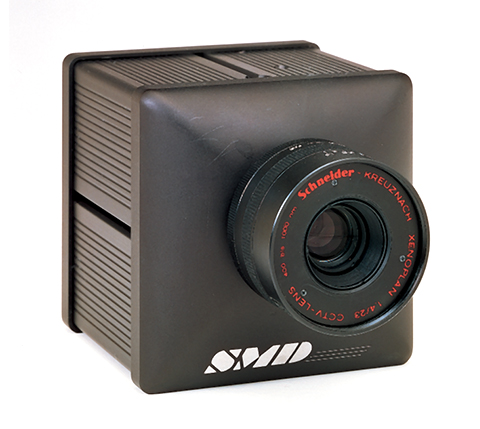Industrial X-ray Imaging
A breed of high-speed camera technology has evolved from a NASA need to study effects of microgravity on science and application experiments carried into space.
For NASA, understanding changes in metal formation and crystal growth while exposed to the space environment—with many responses exceedingly subtle—called for high resolution, high frame rate video technology (HHVT). Studying flame in microgravity, in another instance, as part of combustion research experiments performed on the space shuttle and future space station, dictates use of such tools. In addition, NASA required that HHVT equipment not only had to record information, but process and transmit the data.
In 1990, Lewis Research Center jointly sponsored a conference with the U.S. Air Force Wright Laboratory focused on high speed imaging. The program was organized as a forum where researchers from industry, universities and government could be brought together to discuss the state of knowledge in image gathering, coding, and processing methods.
That conference, and early funding by the Lewis Research Center, helped to spur work by Silicon Mountain Design, Inc. (SMD) of Colorado Springs, Colorado to break the performance barriers of imaging speed, resolution and sensitivity through innovative technology. Continued funding by Wright Laboratory based on this early work led to major breakthroughs in high speed imaging technology.
Later, under a Small Business Innovation Research (SBIR) contract with the Jet Propulsion Laboratory, SMD also designed breakthrough technology which does for high performance imaging what the graphic equalizer does for home stereo equipment. A graphic equalizer in high quality audio, for example, suppresses undesirable hiss while boosting preferred audio frequencies.
Similarly, SMD's "Max-Res" real-time image enhancing camera yields superb, high quality, images in 1/30th of a second while limiting distortion. The result is a rapidly available, enhanced image showing significantly greater detail compared to image processing executed on digital computers.
The company is working with leading medical equipment manufacturers in applying Max-Res technology for radiographic and pathology-based medical applications.
SMD's high speed digital camera work had led to a variety of industrial imaging markets, from airborne spectros copy to non-invasive inspection of integrated chips and other micromachined parts. Also, Polaroid Corporation is using the technology in a new photon tunneling microscope, while Hewlett Packard is applying the camera to x-ray inspection devices.
SMD work has led to the development of high-speed cameras incorporating state-of-the-art charge-coupled devices (CCD) that produce frame rates ranging from 100 to 10,000,000 frames per second. Wright Laboratory and the Naval Research Laboratory are using the cameras for numerous military applications.
Germany's Qtec is using SMD camera technology to provide automated semiconductor inspection equipment. This industrial vision system, coupled with the requisite computer and software, can allow thousands of component parts in electronic circuitry to be examined per minute.
Silicon Mountain Design's work earned them the 1995 and 1996 Industrial/Manufacturing SBIR Technology of the Year Award. SMD also won the grand prize for the SBIR Technology of the Year in 1996 for a million-frame-per -second camera. Presented by the Technology Utilization Foundation, the award was given to SMD "for developing an innovative new technology through the Small Business Innovation Research program, resulting in the improvement of everyday life and the betterment of mankind."

Silicon Mountain Design's digital camera can produce high quality x-ray images for industrial and medical purposes. NASA's need to detect subtle changes in materials made in microgravity spurred the digital camera's development.













